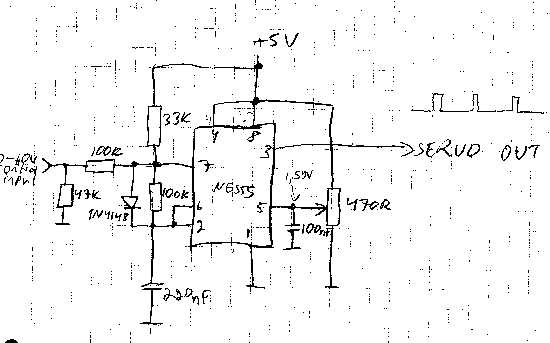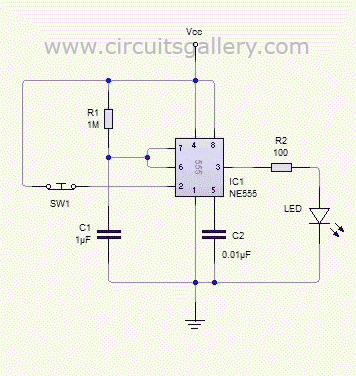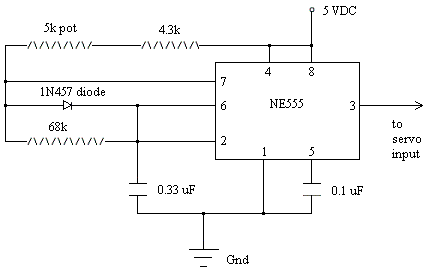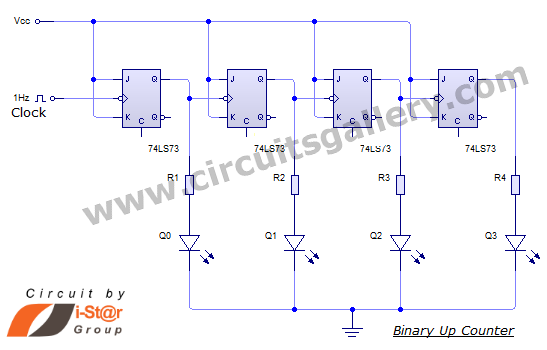
Animation with Servos

A servo consists of a small motor and gear mechanism that rotates a shaft to a precise location and maintains that position. The image displays a typical servo with its cover removed. The shaft's position is controlled by a digital signal. Most servos can rotate through a 180-degree arc while providing significant torque. The servo connects to its controller via three wires. Two wires connect to a DC power source, typically between 5 to 6 volts, while the third wire receives pulses from the controller that instruct the servo where to position its shaft. In the accompanying image, the red wire connects to the positive terminal of the power supply, the black wire connects to the negative terminal, and the white wire receives the positioning pulses. The control pulses are spaced 20 milliseconds apart, and the duration of each pulse determines the resting position of the servo's shaft. A 1.5-millisecond pulse centers the shaft, often referred to as "neutral." A shorter pulse of 1.25 milliseconds rotates the shaft 90 degrees to the right, while a longer pulse of 1.75 milliseconds rotates it 90 degrees to the left. In model airplane radio control systems, these pulses are generated by the airplane's radio receiver, with the pulse length dictated by the position of the radio control transmitter's joystick. The accompanying video shows a servo with a digital oscilloscope in the background, illustrating the control pulses as a square wave. The square wave decreases in width as the servo rotates clockwise and elongates as it rotates counterclockwise. While radio control transmitters and receivers can be used to control servos for animation in layouts, a simpler, more versatile, and cost-effective alternative exists. A device capable of delivering the appropriate sequence of pulses to the servo can be constructed using various electronic circuits, with the PICAXE microcontroller being one of the easiest to implement. Numerous articles have been written detailing model railroad applications utilizing the PICAXE, including projects such as a Robot Train, Morse Code Beacon, Flashing Ditch Lights, and a Lighthouse Controller.
The servo motor operates based on a feedback system that ensures precise control of the output shaft. The internal components typically include a DC motor, a potentiometer for position feedback, and a control circuit. The control circuit interprets the incoming pulse width modulation (PWM) signals and adjusts the motor's position accordingly. The gear mechanism amplifies the motor's torque, allowing the servo to handle loads effectively.
In applications such as robotics, model airplanes, and animatronics, the ability to control the servo with high precision is crucial. The typical 180-degree rotation allows for a wide range of motion, making servos suitable for applications requiring accurate positioning. The use of a microcontroller, such as the PICAXE, simplifies the process of generating the necessary control signals. The microcontroller can be programmed to produce varying pulse widths based on user input or sensor feedback, enabling dynamic control of the servo's position.
For example, in a model railroad application, the PICAXE can be programmed to respond to track sensors, adjusting the position of the servo to switch tracks or activate signals based on train location. This adaptability makes it an ideal choice for hobbyists and engineers looking to implement automated solutions in their projects. The integration of servos into electronic designs enhances functionality and provides a foundation for creating complex systems with precise control capabilities.A servo contains a small motor and gear box that rotates a shaft to a precise location and holds it there. This photo shows a typical servo with its top removed. The position of the shaft is based on a digital signal. Most servos rotate through a 180 degree arc while delivering a good bit of torque. Three wires connect the servo to its controller. Two of the wires connect to a source of DC power, normally 5 to 6 volts. The other wire to the servo receives pulses from the controller that tell the servo where to position its shaft. In the photo below the red wire goes to the positive terminal of the power supply, the black wire goes to the negative and the white receives the positioning pulses.
The control pulses are spaced 20 milliseconds apart and the length of each pulse determines where the servo`s shaft will come to rest. A 1. 5 millisecond pulse will place the shaft in its center position, sometimes referred to as "neutral". A shorter pulse of 1. 25 ms will rotate the shaft 90 degrees to the right while a longer pulse of 1. 75 ms will rotate the shaft 90 degrees to the left. In a model airplane radio control system these pulses are generated by the airplane`s radio receiver.
The length of the pulses is determined by the position of the radio control transmitter`s joystick. This video shows a servo with a digital oscilloscope screen in the background. The square wave on the oscilloscope`s screen gives a visual representation of the control pulses. Note that the square wave gets smaller as the servo rotates in a clockwise direction and elongates as the servo rotates counter clockwise. We could use radio control transmitters and receivers to control the servos that we use for animation in our layouts but there is a much simpler, more versatile and less expensive alternative.
All we need is a device that can deliver an appropriate string of pulses to the servo. This can be done with any number of electronic circuits but the easiest to construct and utilize may be one utilizing the PICAXE microcontroller. I have written a number of articles that describe model railroad applications based on the PICAXE including a Robot Train, Morse Code Beacon, Flashing Ditch Lights and a Lighthouse Controller.
I encourage you to read these articles for more information on the capabilities o 🔗 External reference
The servo motor operates based on a feedback system that ensures precise control of the output shaft. The internal components typically include a DC motor, a potentiometer for position feedback, and a control circuit. The control circuit interprets the incoming pulse width modulation (PWM) signals and adjusts the motor's position accordingly. The gear mechanism amplifies the motor's torque, allowing the servo to handle loads effectively.
In applications such as robotics, model airplanes, and animatronics, the ability to control the servo with high precision is crucial. The typical 180-degree rotation allows for a wide range of motion, making servos suitable for applications requiring accurate positioning. The use of a microcontroller, such as the PICAXE, simplifies the process of generating the necessary control signals. The microcontroller can be programmed to produce varying pulse widths based on user input or sensor feedback, enabling dynamic control of the servo's position.
For example, in a model railroad application, the PICAXE can be programmed to respond to track sensors, adjusting the position of the servo to switch tracks or activate signals based on train location. This adaptability makes it an ideal choice for hobbyists and engineers looking to implement automated solutions in their projects. The integration of servos into electronic designs enhances functionality and provides a foundation for creating complex systems with precise control capabilities.A servo contains a small motor and gear box that rotates a shaft to a precise location and holds it there. This photo shows a typical servo with its top removed. The position of the shaft is based on a digital signal. Most servos rotate through a 180 degree arc while delivering a good bit of torque. Three wires connect the servo to its controller. Two of the wires connect to a source of DC power, normally 5 to 6 volts. The other wire to the servo receives pulses from the controller that tell the servo where to position its shaft. In the photo below the red wire goes to the positive terminal of the power supply, the black wire goes to the negative and the white receives the positioning pulses.
The control pulses are spaced 20 milliseconds apart and the length of each pulse determines where the servo`s shaft will come to rest. A 1. 5 millisecond pulse will place the shaft in its center position, sometimes referred to as "neutral". A shorter pulse of 1. 25 ms will rotate the shaft 90 degrees to the right while a longer pulse of 1. 75 ms will rotate the shaft 90 degrees to the left. In a model airplane radio control system these pulses are generated by the airplane`s radio receiver.
The length of the pulses is determined by the position of the radio control transmitter`s joystick. This video shows a servo with a digital oscilloscope screen in the background. The square wave on the oscilloscope`s screen gives a visual representation of the control pulses. Note that the square wave gets smaller as the servo rotates in a clockwise direction and elongates as the servo rotates counter clockwise. We could use radio control transmitters and receivers to control the servos that we use for animation in our layouts but there is a much simpler, more versatile and less expensive alternative.
All we need is a device that can deliver an appropriate string of pulses to the servo. This can be done with any number of electronic circuits but the easiest to construct and utilize may be one utilizing the PICAXE microcontroller. I have written a number of articles that describe model railroad applications based on the PICAXE including a Robot Train, Morse Code Beacon, Flashing Ditch Lights and a Lighthouse Controller.
I encourage you to read these articles for more information on the capabilities o 🔗 External reference





%2Bwith%2Banimation%2Bsimulation%2Bcircuit.png)